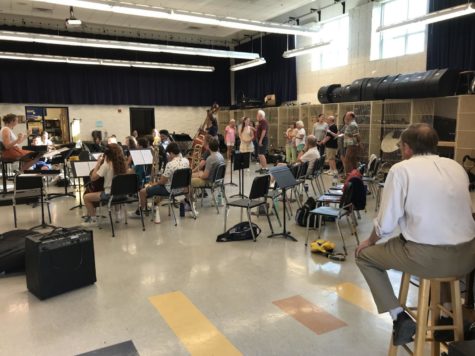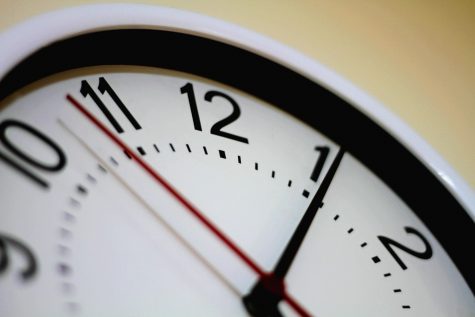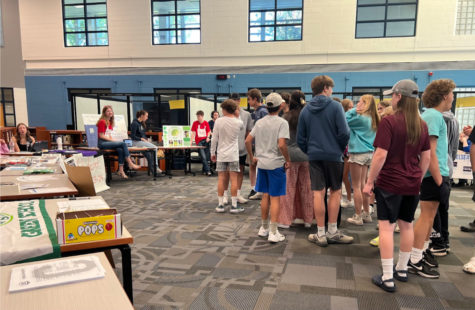Era’s Tour Changing the Music Industry: Taylor Swift Album Rating
Getty Images for TAS Rights Mana
Glendale, Arizona: photo by John Shearer/Getty Images
From rising pop-country sensation, to global superstar, Taylor Swift is undeniably one of the most influential and important artists of the past two decades. Her sound is consistently evolving, her songs inspire discussion, and her legions of fans never hesitate to defend her tooth and nail on various corners of social media.
Ranking all ten studio albums put me in an interesting position. I’ve never been much of a Swiftie; only a casual listener at most. But in wake of her recent album Midnights hitting shelves in October, I found myself with a newfound interest in checking out the rest of Swift’s discography. It seemed like a massive blind spot for a big pop music guy like myself, so I decided to work through her catalog in chronological order and compile my definitive ranking.
How am I ranking them? Well, I tend to evaluate music based on how it makes me feel, and that’s the approach I decided to go with here. This doesn’t mean I’m confined to only talking about lyrical content; production, instrumentation, and other basic elements of songcraft massively contribute to a song’s emotional impact as well.
One more thing: I was faced with a major dilemma as I planned this out. Should I feature the Taylor’s Versions releases of Red and Fearless, or just stick with the originals? For those unfamiliar, Swift is currently going through the process of rerecording her first six albums, due to the masters of those tracks being owned by entertainment executive Scooter Braun. Fearless and Red have been the only records to receive this treatment thus far, but it was a real tough decision to decide which versions I should use in the ranking – for both moral reasons and fear of losing my life at the hands of angry Swifites. Ultimately, it felt like it would make more sense to listen to the original versions in order to get a better feel for her evolution as an artist over the years. Sorry guys.
#10: Lover
In theory, Lover is perfect. A return to the bright synthy bops sound perfected on 1989, featuring collaborators like Jack Antonoff, St. Vincent, and The Chicks. Primarily, the album is a love letter to love itself, and the beauty of holding onto and letting go of memories of previous loves. And at its best, it beautifully captures that euphoria and frustration. “Cruel Summer,” is an all-timer in her catalog; an explosive banger that might just have the most exhilarating courses she’s ever written. Unfortunately, the rest of the album can’t quite keep up. Quite frankly, a lot of the cuts here just sound like mediocre Carly Rae Jepson b-sides, and there aren’t nearly enough bops to justify the sixty-minute length. The attempts at different styles are certainly appreciated; the title track is a thumping, guitar-heavy ballad destined to be played at school dances for the rest of eternity, and “Paper Rings” is a decent little slice of pop rock with heavy Disney Channel energy. On the other hand, “ME!” is almost excruciating, suffering from an absolutely joyless Brendan Urie feature. A lot of the tracklist is truly unremarkable, and while it’s nice to see Swift embracing joy again after the bassy darkness of reputation, Lover is neither memorable nor consistent enough to warrant much of a recommendation.
#9: Midnights
Midnights is Swift’s most recent release, but, unfortunately, it also stands as one of her weakest. In theory, it sounds promising: a return to the heavy electropop bangers of reputation with production from long-time-collaborator Jack Antonoff. And, honestly, it begins strong. “Lavender Haze,” “Maroon,” and “Anti Hero”. Catchy, pulsating synthpop, that – despite never reaching the heights of the best cuts from her previous attempts at the sound – feels like a welcome throwback to her late-2010s output. These are followed up with “Snow on the Beach,” a cute piano ballad that suffers from criminal underutilization of a feature from Lana Del Rey. Afterwards, things start to go sour. The rest ranges from “mildly-pleasant while it’s on” to “aggressively-mediocre,” and tracks begin to lack definition and start to blend into each other until it’s impossible to recall which song was which. Antonoff’s minimalist, stripped-down approach to production here feels completely misguided, because instead of feeling sparse and cold in an interesting way, a majority of the tracks sound skeletal and unfinished. I’ll usually defend the man, but I fear Twitter may have been right here; a good chunk of the album just sounds bad. Really, what it lacks most is interesting choices. In her most successful endeavors with the genre, Swift ended up being able to wield the emotiveness of synthpop to create decade and genre-defining pop songs. That energy is sorely missing here, and Midnights desperately needs a spark of it.
#8: Taylor Swift
Seeing as it’s the album that launched the career of one of today’s biggest superstars, you would think there would be more to say about Swift’s self-titled debut. That’s not to say it’s bad; it’s a solid, catchy slice of pop-country. A lot of the hits still hold up today, with rocker “Picture to Burn” and ballad “Teardrops on My Guitar” as obvious highlights. “Our Song” is charming, describing the surroundings in a relationship as totems of love that are essential to hold onto. In the similarly-moving “Tim McGraw,” Swift asks a lover to think of her when he hears the music she loves. Several songs and sentiments like this are present here, but, unfortunately, a good chunk of it is incredibly forgettable. A lot of the tracks tend to blend together, and beyond the obvious standouts, there just isn’t enough here for this ascend to anything beyond a decent country record. There’s sparks here for sure, but it’s clear that this is not yet a full realization of Swift’s potential as an artist.
#7: reputation
It’s safe to say the mid-’10s were a tumultuous time for Taylor Swift. Coming off of several feuds with massive celebrities like Kanye West, Kim Kardashian and Katy Perry, and several short-lived romantic relationships extensively covered by tabloids, reputation is an album born out of frustration. And upon release, it was met with extensive criticism from both fans and critics alike. Looking back, the idea that Swift genuinely believed the vengeful popstar narrative she embraced in the music feels rooted in ugly misogyny, deeply ungenerous, and, honestly, kind of anti-art. The album itself is easily Swift’s most underrated release, and the darker, bass-heavy, trap-inspired production really works. Highlights include opener “…Ready For it?”, a hard-hitting, abrasive track that, much like 1989’s “Welcome to New York,” truly feels like the beginning of a new era. “Delicate” uses minimalism to great effect; an ethereal, stripped-down ballad that, emotionally, hits harder than anything else on the album. And, honestly, was “Look What You Made Me Do” really that bad? It’s a fun track, despite a weak course, and really didn’t deserve all of the backlash. It’s certainly not a perfect album. The dubstep noises on “I Did Something Bad” are deeply unpleasant, and a lot of the back half is fairly forgettable. Still, the darker sound that permeates the record really suits Swift, and it’s a route I wish she would revisit someday. If you ask me, reputation is one of her stronger ventures into synthpop, and desperately warrants a wide reappraisal.
#6: Fearless
In just about every way, Swift’s sophomore album Fearless is a massive step-up from its predecessor. The hooks are sharper, the songwriting is more captivating, and it feels tighter, leaner, and more consistent as a cohesive listening experience – despite having roughly the same runtime. Lyrically, love is, of course, a major topic, but it’s not too shabby either as an album about growing up. Given the fact that Swift was seventeen at the time, it gives those themes an air of authenticity. Songs like “Fifteen” beautifully capture that wide-eyed, early-high-school anticipation for the future, but there’s a sense of longing for the past here too. “The Best Day” is easily the most moving track, a richly-detailed recollection of various positive childhood memories. Really though, there’s a whole host of classics on here; “Love Story,” “Hey Stephen,” and “The Way I Loved You” contain some of Swift’s catchiest-ever songwriting.
While her debut was serviceable, Fearless is a near-perfect pop record that showed the world just what the young singer-songwriter was capable of.
#5: folklore
Surprised released in the middle of Summer, 2020, folklore is somewhat of a departure for Swift. For one, it’s a total embrace of a folky, singer-songwriter sound. Gone are the twanging guitars and crisp synth leads of her past discography; here, the production and lyricism takes a much more acoustic, stripped-back and intimate approach. It’s much more Joni Mitchell than Carly Rae Jepson, and the whole album sounds absolutely gorgeous. It’s also notable that a lot of the music here is no longer about Swift. Here, she becomes a storyteller, weaving tales of teenage drama, scornful rage, and infidelity. The detail and wit she brings to these subjects is still uniquely Taylor Swift, however, and if one is worried, there’s still plenty from her perspective here as well. “exile” is an obvious standout, featuring stunning vocals from Bon Iver’s Justin Verner and delivering one of Swift’s most crushing breakup narratives to date. “mirrorball” and “the last great american dynasty” are two of the most danceable tracks, with the former being a somber reflection on Swift’s relationship with her fans, and the latter a fascinating account of the previous residents of her Rhode Island mansion. “seven” cuts deep, an open letter to an old childhood friend with a troubled home life. “betty” touches on a familiar topic for Swift: teen heartache. It’s a sweet, touching account of a young boy apologizing to the girl he loves whom he has clearly wronged, and it’s another clear highlight. Listening to folklore, it’s clear that telling others’ stories really suits Swift, as well as the fact that her songwriting in general just keeps getting better and better. It’s a warm album for cold nights, and a perfect example of a change in sound proving to be greatly beneficial.
#4: Speak Now
What’s magical about Swift’s first four albums is how they build upon each other. Each one feels like a culmination of the previous releases’ strengths, but in addition to doing this, Swift’s third studio album Speak Now is the first of her projects to feel truly transitory. Conceived as a series of open letters to those who have impacted her throughout her teenage years, it’s a look at the past as a response to an uncertain future, making for some of her most affecting songwriting ever. Songs like “Sparks Fly,” “Enchanted,” and “Mine” are achingly romantic. “Back to December,” “Dear John,” and “The Story of Us” are deeply regretful. And in “Better Than Revenge” and “Mean,” Swift’s writing takes on an anger that feels truly palpable. It’s a big album about big feelings (it runs for over an hour), but it works. It’s a testament to Swift’s ability as a writer and performer that something this personal manages to be so intensely relatable. Sonically, it’s no slouch either. The production is warmer, fuller, and bigger than it had ever been before, and the whole album feels vibrant and alive. Speak Now is a revelation; a perfect distillation of everything positive about Swift’s previous work, and a moving reflection on the tumultuous beauty and pain of teenage life.
#3: evermore
Released a mere five months after folklore, evermore largely has the same relationship with that album as Fearless did with her self-titled debut: an expansion of the previous release’s sound that hones in on what made it great in the first place and sands down the rough edges. That’s right, it’s another folky Taylor Swift project, but open “willow” begins things with a considerably brighter sonic palette than anything off of the last record. It’s a bouncy and vibrant acoustic-driven pop song about a mysterious lover, featuring one of Swift’s catchiest choruses. Of course, darkness is still lurking beneath the surface. “ivy” is a devastating portrayal of forbidden love, and “no body, no crime” is about, well, murder. Lyrically and musically evermore is easily Swift’s most varied album, with slow piano ballads like “champagne problems” and “dorothea” existing in the same vicinity as the early-career country throwback “cowboy like me.” Like its predecessor it’s a lengthy, enveloping listen, and perhaps the easiest of Swift’s albums to get lost in. In terms of vibes, it’s excellent as well; witchy, autumnal, and cool – perfect for when temperatures begin to drop and things begin to rot. It’s a fun, moving, gorgeous, and varied album that confirms one thing we all already know: in terms of songwriting, Swift is one of the greats.
#2: Red
Right out of the gate, it’s immediately clear that Red is something special. The album roars to life with “State of Grace,” a transcendent opener about the dizzying feeling of an unexpected crush. It’s an adrenaline rush of a track, and this energy is impressively sustained throughout the entirety of the album’s hour-long runtime. Writing passionate, vivid declarations and ruminations of and about love has always been Swift’s strong suite, and, here, that ability is highlighted even better than anywhere else. “Sad Beautiful Tragic” and “Stay Stay Stay” are heart-wrenching acoustic ballads, and “All Too Well” is a fan favorite for a reason, a searing portrait of picking up the pieces after an extremely rough breakup. “The Last Time,” “The Lucky One” and the title track are all excellent pop-rock bangers, and occasional forays into straight-up electrotop are exhilarating. As an album, it’s tight, consistent, and manages to be sad, romantic, angry, and regretful all at once. It’s clearly the work of a pop mastermind, and even ten years later, it’s impossible to look at Red as anything but a stone-cold classic.
#1: 1989
Out of perhaps any album in Swift’s discography, 1989 still feels the most like a true turning point. After Red perfectly distilled everything good from her three previous release, a change of sound seemed like the most logical step. Three years later, Swift did just that and went full synthpop. The production from industry heavy-hitters like Max Martin and Jack Antonoff is pristine, and the tracklist is simply classic after classic. “Welcome to New York” is a bright, joyous introduction to this whole new world . “Blank Space” is a brilliant, anthemic subversion of the misogynistic critiques lobbied at Swift’s “obsessive dater” persona. Whether you care about the Katy Perry beef or not, “Bad Blood” is a legendary banger, that, honestly, has a more palpable sense of danger than anything off of reputation. “Wildest Dreams” contains one of pop music’s best bridges, an explosion of memories and pure emotion that lingers long after the song is over. “Style” is a stunning blast of warm, glimmering pop euphoria, and probably the best thing Swift has ever recorded. As far as “Shake it Off”? The less said about it the better, but the rest of the album is so good that it doesn’t even matter. 1989 more than earns its place as one of the best pop albums of the previous decade, and still feels like the most exciting and accomplished thing Swift has ever released.















Sonja Schemahorn • Jun 7, 2023 at 8:11 AM
This is FIRE, TS SLAYS?
DM • Jun 8, 2023 at 8:03 AM
Sonja is spitting absolute FAX! This article is AMAZEBALLS